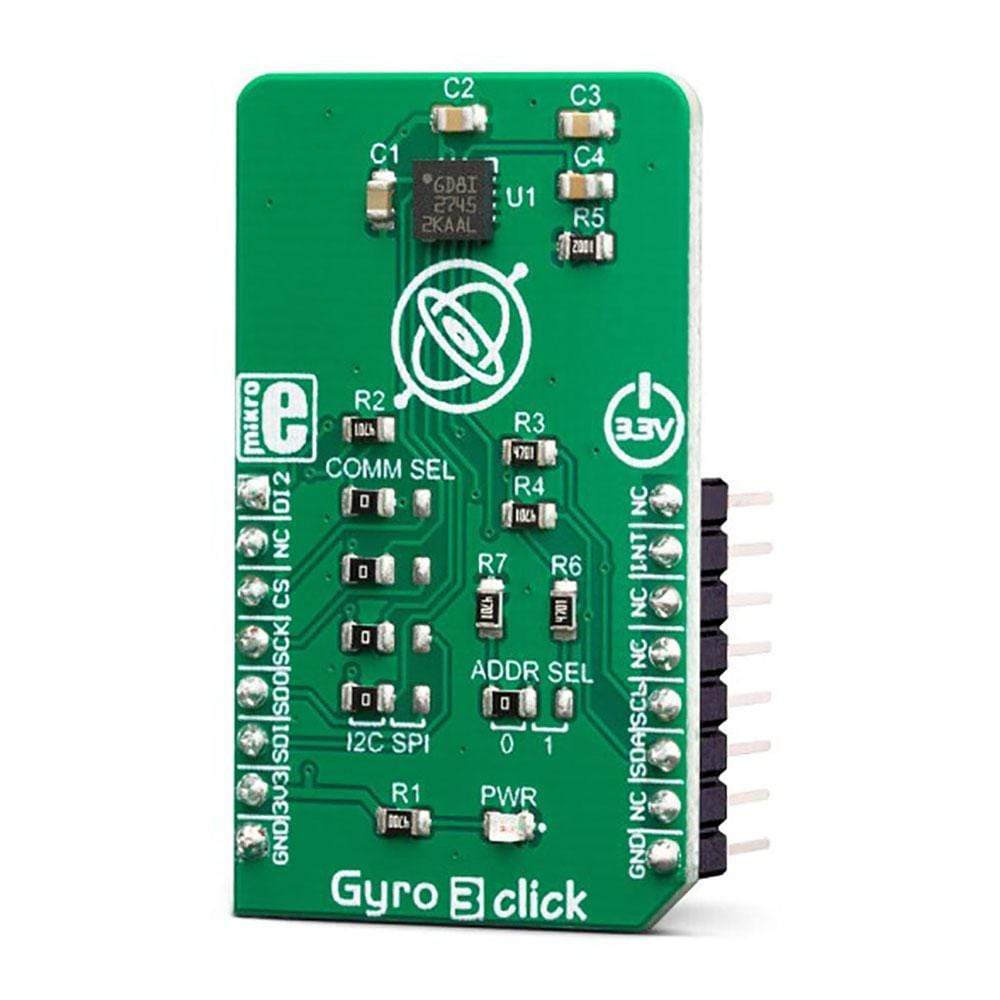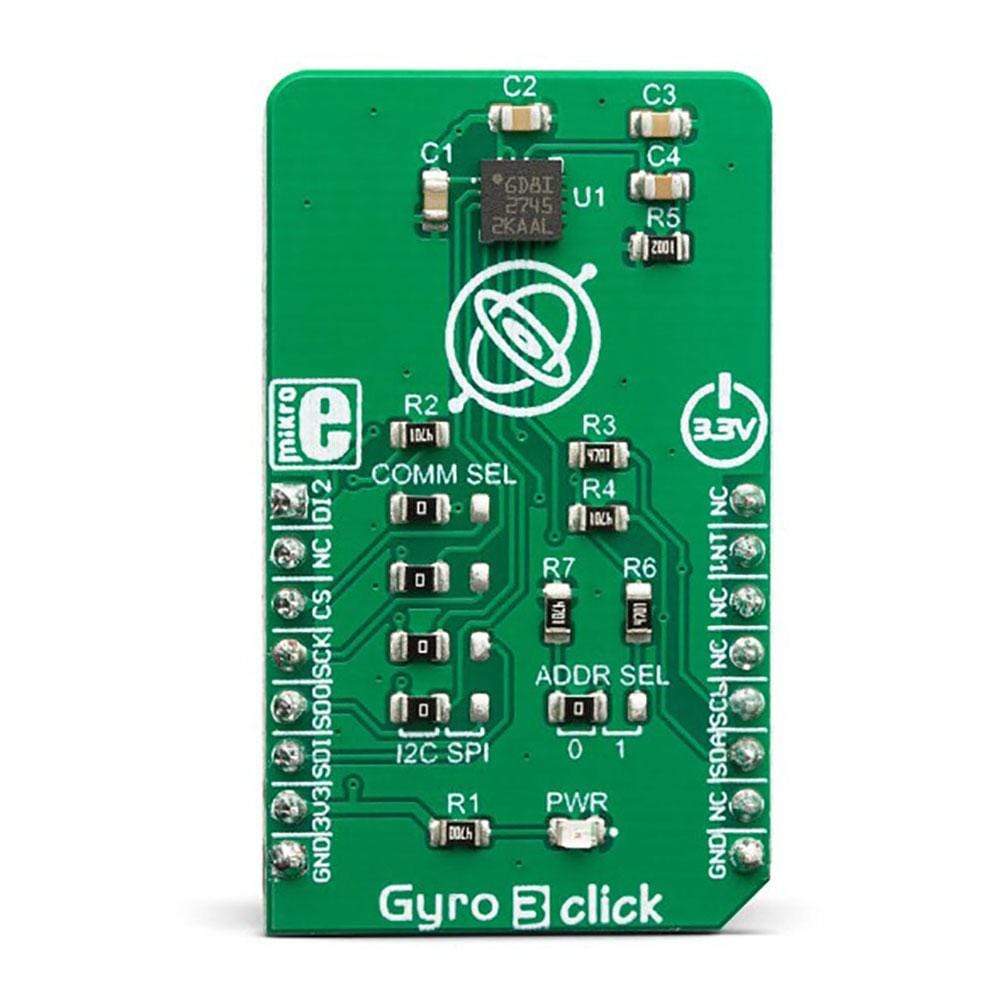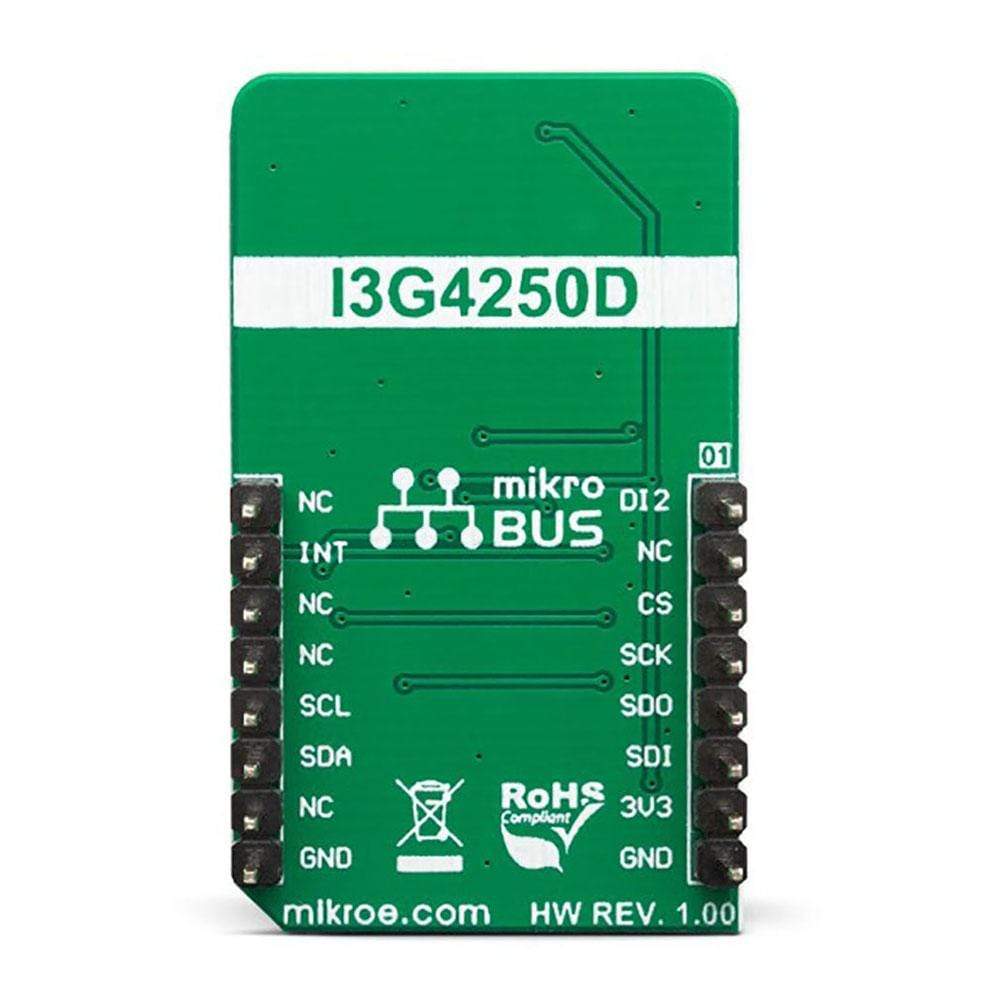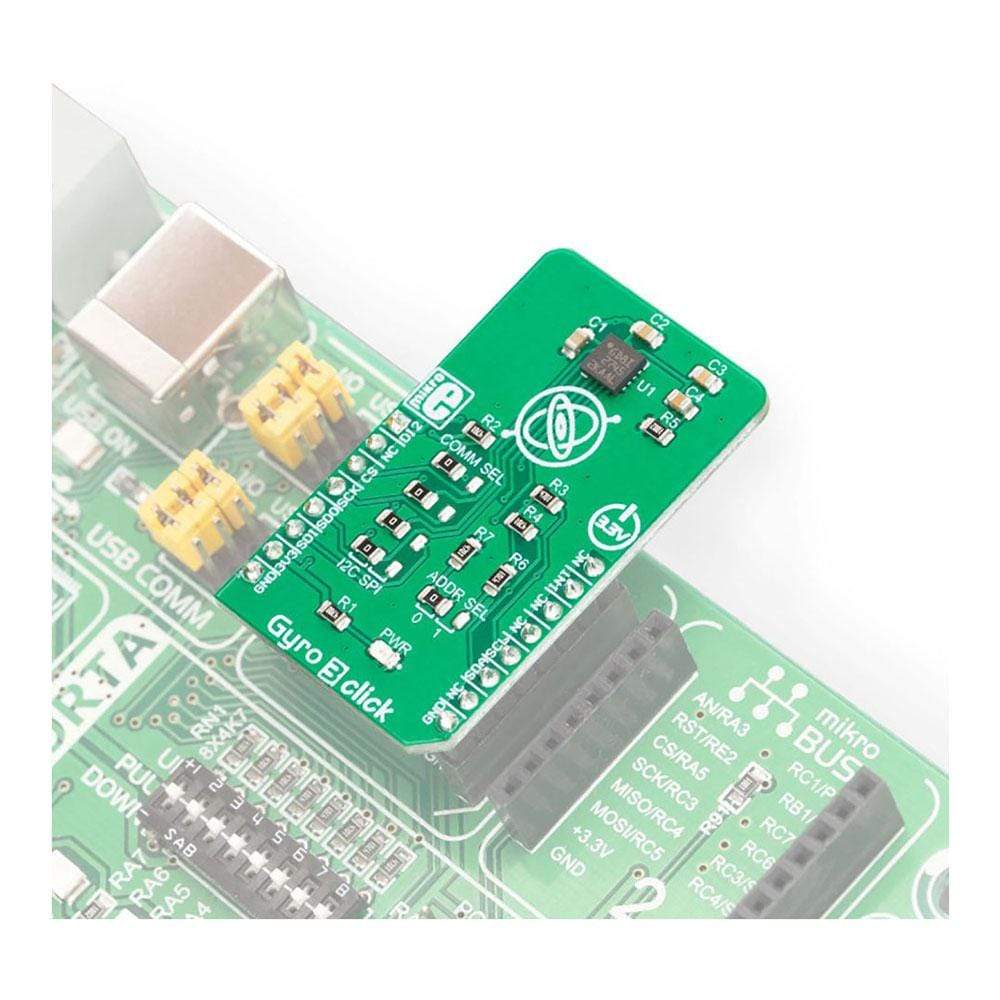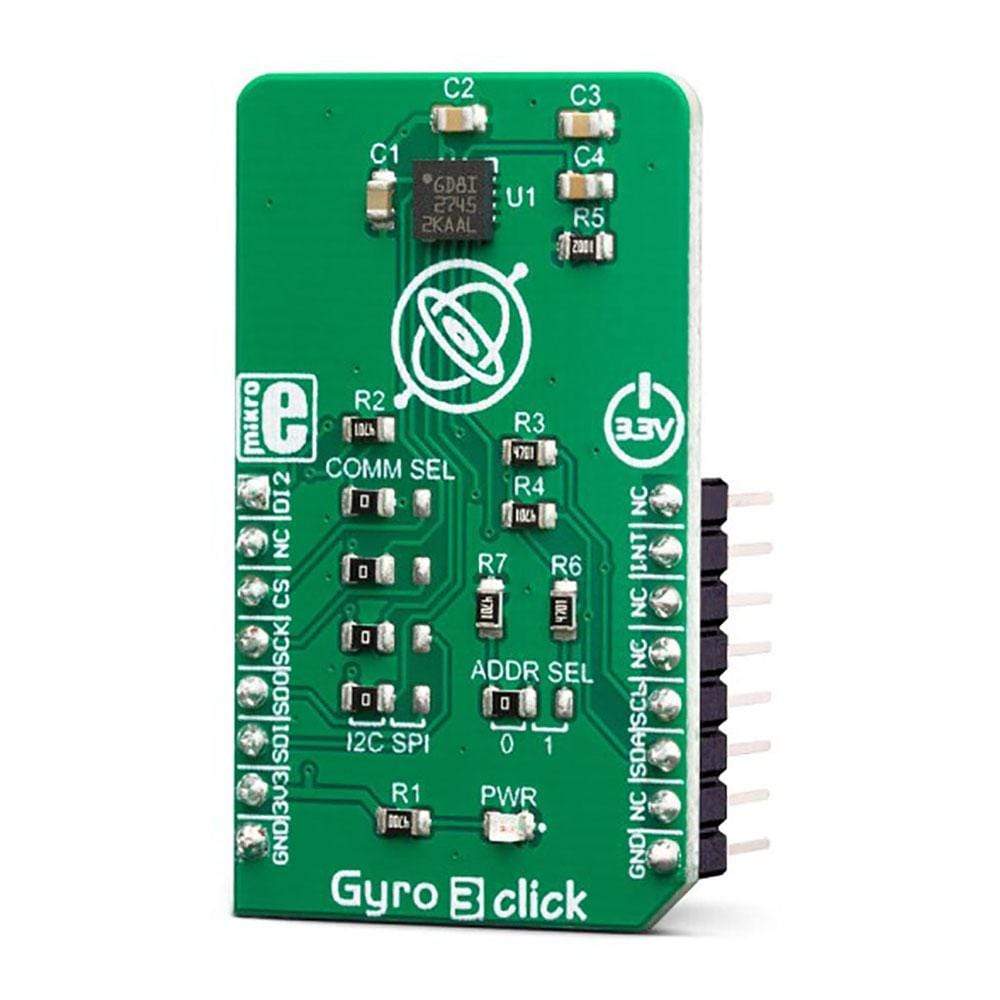
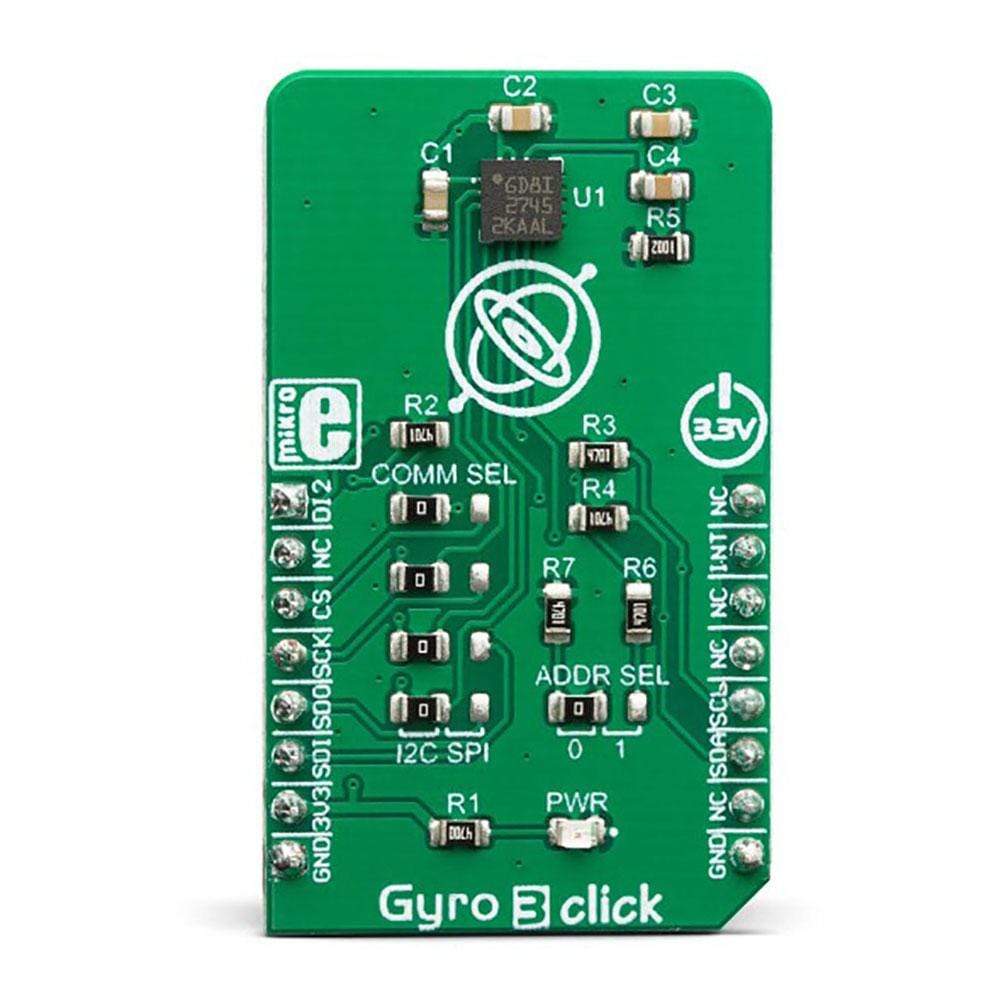
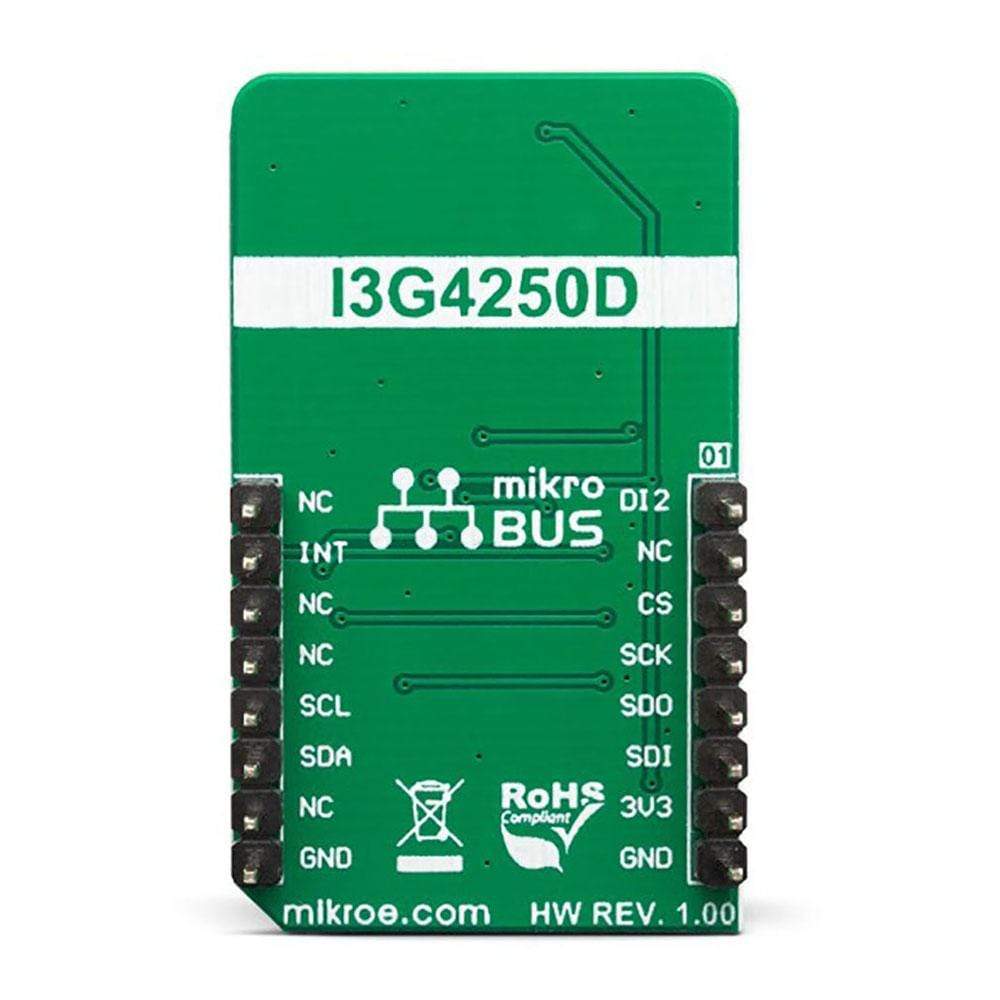
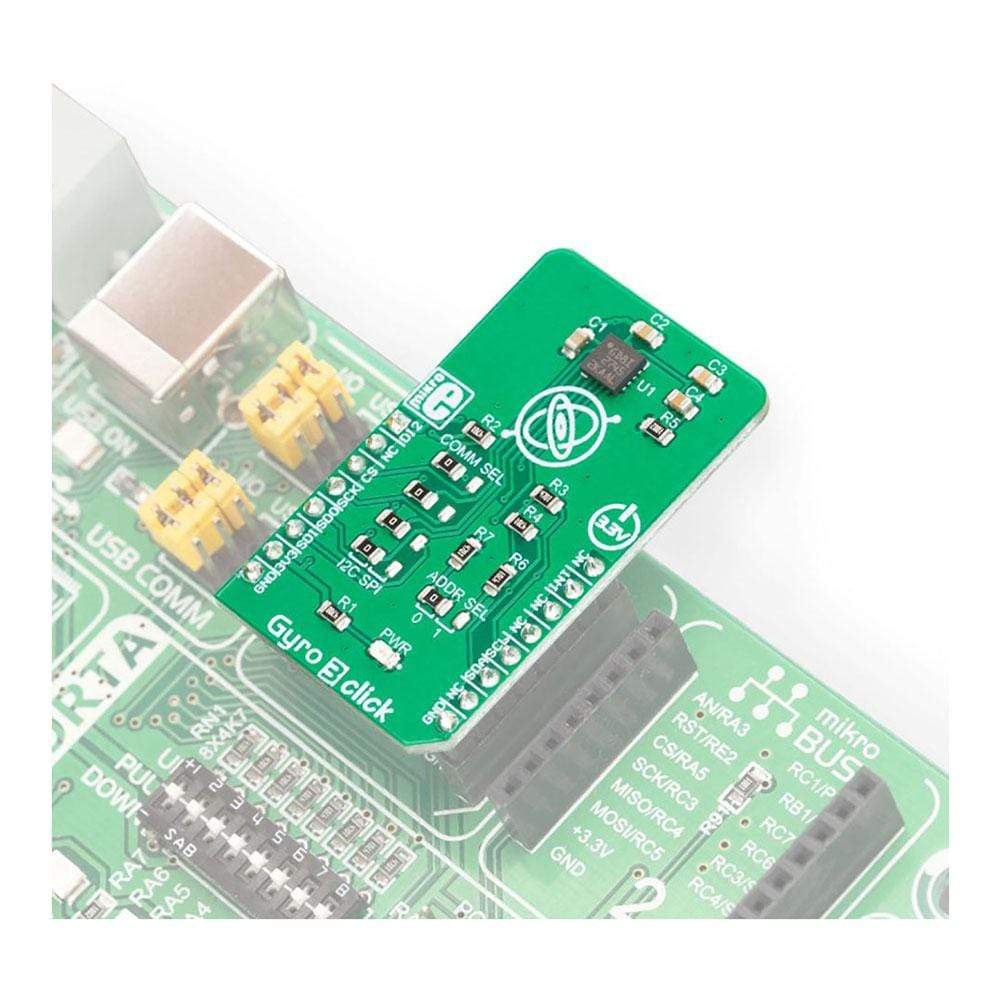
Overview
The Gyro 3 Click Board™ is a three-axis gyroscope Click Board™ that can sense motion over three perpendicular axes. It is equipped with the I3G4250, a three-axis digital gyroscope. This IC incorporates microelectromechanical sensing elements (MEMS), produced using a proprietary CMOS micromachining technology. This technology allows for excellent stability and linearity over temperature. The angular data is available in a 16-bit format, along with 8-bit temperature data.
Gyro 3 Click Board™ can be used for angular speed up to 2000 degrees per second (dps), it features a FIFO buffer, two dedicated interrupt lines, and on-chip data processing for optimized firmware development.
Downloads
Le Gyro 3 Click Board™ est un gyroscope Click Board™ à trois axes capable de détecter le mouvement sur trois axes perpendiculaires. Il est équipé du I3G4250, un gyroscope numérique à trois axes. Ce circuit intégré intègre des éléments de détection microélectromécaniques (MEMS), produits à l'aide d'une technologie de micro-usinage CMOS exclusive. Cette technologie permet une excellente stabilité et linéarité en température. Les données angulaires sont disponibles dans un format 16 bits, ainsi que des données de température 8 bits.
Gyro 3 Click Board™ peut être utilisé pour une vitesse angulaire jusqu'à 2000 degrés par seconde (dps), il dispose d'un tampon FIFO, de deux lignes d'interruption dédiées et d'un traitement de données sur puce pour un développement de micrologiciel optimisé.
| General Information | |
|---|---|
Part Number (SKU) |
MIKROE-3449
|
Manufacturer |
|
| Physical and Mechanical | |
Weight |
0.018 kg
|
| Other | |
Country of Origin |
|
HS Code Customs Tariff code
|
|
EAN |
8606018714964
|
Warranty |
|
Frequently Asked Questions
Have a Question?
Be the first to ask a question about this.

